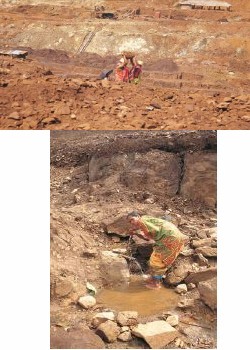The problem
Chromite, a heavy metal used in the production of chrome metal and chromium, was discovered in India, in 1949. Today, about 97 percent of the nation’s deposits are found in the mineral-rich earth of the Sukinda Valley, Jajpur district, and it is the home to one of the largest open cast chrome ore mines in the world. Over 30 million tons of overburden (leftover rock after ore-removal) litters the surrounding areas and the Brahmani river banks. This area is flood-prone resulting in significant contamination of the waterways.Health Impact
The Orissa Voluntary Health Association (OVHA), an NGO which conducted a survey in the region in 1995 under the Orissa Environment Program funded by the Norwegian government, reported acute health problems. The findings of OVHA were a startling pointer to the health hazards of mining: among the total cases of mortality, 84.75% deaths in the mining areas and 86.42 per cent deaths in industrial villages occurred due to diseases. The survey report maintained that villages at a distance of less than one kilometer from the sites were the worst affected, with 24.47 per cent of the inhabitants found suffering from pollution-induced diseases. The survey concluded: "The pollution and health hazards related to hexavalent chromium are acute, causing irreparable loss to human health."Current Activity
Blacksmith Institute will visit this site
India
The chromite-ore mines in Orissa (top); A water stream 200 m below the ground, which is the only source of water for 300 workers (bottom).
Data File
Pollutants:
Hexavalent Chromium
Location:
Orissa,
India
Transmission:
water
Source:
Mining
Potentially affected people:
2.6 million
Report Type:
Technical Advisory Board
Project Status:
Ongoing Project
Pollution Status:
Active
Date Nominated:
May 1st, 2004
Nominator:
BI
Fit Criteria:
Y
Action:
sent to TAB


